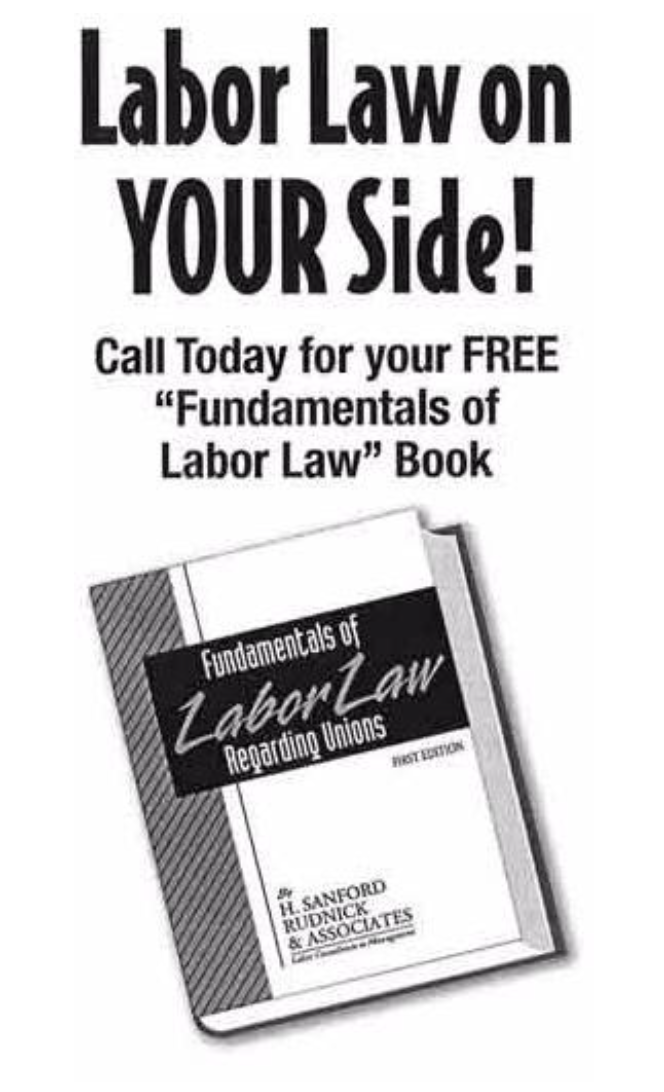H. Sanford Rudnick & Associates can win you case at the National Labor Relations Board (NLRB) or help you to Negotiate a Favorable Agreement.
The body content of your post goes here. To edit this text, click on it and delete this default text and start typing your own or paste your own from a different source.
Fundamentals of Labor Law
Sanford Rudnick has written a book called Fundamentals of Labor Law which helps Employers practice at the NLRB. He has used this book for over 40 years.
Sanford Rudnick has gotten this book into many law schools around the country such as Harvard and USC Law School.
Also, Sanford Rudnick has gotten other books on Resolution of Conflict into the Library of Congress and many other libraries around the world.
The major problem in any election or an unfair labor practice charge, is how to resolve conflict between management and your employees. In fact, according to the NLRB there is an 16% increase in unfair labor practices charges being filed by employees or unions in 2023.
Sanford Rudnick uses these principles in these books to win elections and to resolve charge at the NLRB. Call H. Sanford
Rudnick & Associates to purchase these books at
1-800-326-3046.

IF YOU NEED ASSISTANCE IN CONDUCTING AN ELECTION MEETING, PLEASE CALL:
H. Sanford Rudnick JD: 1 800-326-3046

H. Sanford Rudnick & Associates is a full-service Labor Relations firm with 40 years of experience in negotiating union contracts, NLRB matters and all human resource matters. In fact, Mr. Rudnick has written a book called "Fundamentals of Labor Law Regarding Unions" which includes a summary on the National Labor Relations Board and Unions which is at Harvard Law School Library and other law schools around the country. Call to purchase your copy at for $29.95 800.326.3046.
We step in when your business demands your attention or when the unions or the laws or rules of the any of the following threaten the success or profitability of your business.
National Labor Relations Board (NLRB)
Equal Employment Opportunity Commission (EEOC)
Employee Motivation
Wage and Hour Surveys
Union elections
Collective bargaining
negotiations
Decertifications
The need for union avoidance
Always Here to Help!
If my firm, H. Sanford Rudnick & Associates, can be of assistance to you concerning an election,
an unfair labor practice, negotiations, your unfunded pension liability
or any other human resource matter, please contact me immediately to schedule a free telephone consultation.
Respectfully,
H. Sanford Rudnick, J.D.
Labor Consultant
800.326.3046
GET IN TOUCH!
H. Sanford Rudnick and Associates
300 South 4th Street, 6th Floor,
Las Vegas, NV 89101
1717 K St. NW S900J
Washington DC 20006
745 5th Ave. 8500
NY, NY 10151
1990 No. California Blvd. S830,
Walnut Creek, Ca 94596
Direct Line - 925-256-0660
Cell Phone - 925-352-7900
Sandy Rudnick

